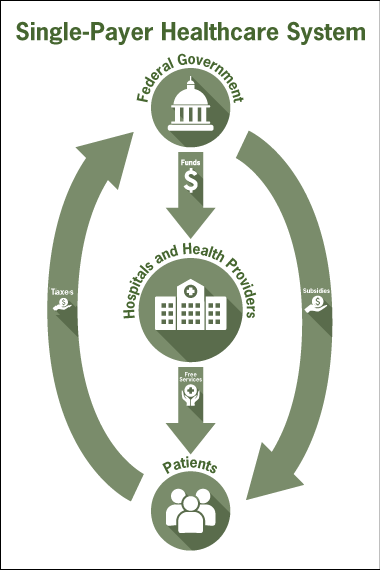Table of ContentsThe Role Of Public Policy In Health Care Market Change ... Can Be Fun For AnyoneHealthcare Policy In The United States - Ballotpedia for DummiesThe 9-Second Trick For Healthcare Policies - List Of High Impact Articles - Ppts ...The Definitive Guide for Health Policy - American Nurses Association (Ana)The Role Of Public Policy In Health Care Market Change ... Can Be Fun For AnyoneOur Current Debates In Health Care Policy: A Brief Overview PDFs
Contrast nations are Australia, New Zealand, Spain, South Africa, Switzerland, and the United Kingdom. Price data are not available for all goods and services in all nations (e.g., rates for Xarelto are available just for South Africa, Spain, Switzerland, the UK, and the United States, not for Australia or New Zealand).
average for all 21 and are the highest amongst all the nations (that is, the U.S. typical goes beyond the non-U.S. maximum) for 18. Averaged across the non-U.S. mean costs, costs in the United States are more than two times as high as costs in peer nations. And even when averaged across the non-U.S.
costs are more than 40 percent higher. Notably, a variety of these products and services are extremely tradeableparticularly pharmaceuticals. The fact that worldwide tradeability has actually not worn down enormous cost differentials in between the United States and other countries ought to be a red flag that something strikingly ineffective is taking place in the U.S.
The Best Strategy To Use For Healthcare Policies - List Of High Impact Articles - Ppts ...
shows some specific procedures of utilization that correspond to the cost information highlighted in Figure L: the occurrence of angioplasties, appendectomies, cesarean sections, hip replacements, and knee replacements, normalized by the size of the nation's population. On two of the five steps, the United States has either a common (angioplasties) or relatively low (appendectomies) usage rate relative to other nations' averages.
For all four of these procedures, the United States is well below the greatest usage rate. The United States is just the highest-utilization countryby a small marginwhen it pertains to knee replacements. In other words, if one were looking just at the data charting healthcare utilization, one would have little factor to guess that the United States spends much more than its innovative nation peers on health care.
OECD minimum OECD maximum 30-OECD-peer-country average 1 Angioplasty 0.19 2.15 1.03 Appendectomy 0.79 2.03 1.39 C-section 0.41 1.92 0.76 Hip replacement 0.12 1.49 0.76 Knee replacement 0.03 0.93 0.47 1 ChartData Download data The information underlying the figure. Utilization procedures are normalized by population. U.S. levels are set at 1, and procedures of utilization for other countries are indexed relative to the U.S.
The Importance Of Healthcare Policy And Procedures Fundamentals Explained
Author's analysis of OECD 2018a shows another set of international contrasts of healthcare inputs and costs, from Laugesen and Glied (2008 ). Laugesen and Glied compare physician services' utilization and incomes in Australia, Canada, France, Germany, and the UK with those in the United States (in the figure, the U.S.
They discover that usage of medical care physicians by patients is higher in all of these nations, by an average of more than half. Yet salaries of medical care physicians are greater in the U.S., by approximately 50 percent. The usage step they utilize for orthopedists is hip replacements.
They are approximately as common in Australia (94 to 100) and the UK (105 to 100), and they are more common in France and Germany. Orthopedist incomes are much higher in the United States than in any peer countrymore than twice as high on average. The income contrasts in Figure N are net of physician's financial obligation service payments for medical school loans, so this common description for high American doctor wages can not describe these distinctions.
The Ultimate Guide To Who - Health Policy
= 1 Medical care physicians' incomes Orthopedists' incomes 1 Australia 0.50 0.42 Canada 0.67 0.47 France 0.51 0.35 Germany 0.71 0.46 United Kingdom 0.86 0.73 Non-U.S. typical 0.65 0.49 1 The data underlying the figure. U.S. = 1 Medical care usage Hip replacement usage 1 Australia 1.61 0.94 Canada 1.53 0.74 France 1.84 1.33 Germany 1.95 1.67 UK 1.34 1.05 Non-U.S.
Usage procedures are stabilized by population. U.S (which of the following are characteristics of the medical care determinants of health?). levels are set at 1, and measures of usage for other countries are indexes relative to the U.S. The information source utilizes incidence of hip replacements as the relative usage procedure for orthopedists. Data from Laugesen and Glied 2008 As we have actually kept in mind, numerous truly argue https://www.transformationstreatment.center/resources/medication-treatment/oxycodone-vs-hydrocodone-for-pain-what-is-the-difference/ that most Americans would not wish to trade the health care available to them today for what was readily available in years past, even as official cost information show that all that has actually altered is the price.
This healthcare available abroad is far more affordable and yet of a minimum of as high quality. The reasonably low level of usage and very high cost levels in the U.S. provide suggestive proof that the quicker rate of health care costs development in the United States in recent decades has been driven on the cost side too.
The 8-Minute Rule for Healthcare Policy In The United States - Ballotpedia
It is clear that the United States is an outlier in international contrasts of healthcare costs. It is also clear that the United States is an outlier not since of overuse of health care however since of the high price of its health care. As discussed above, the United States is extremely average on health result steps (see Figure D) and is even toward the low end of lots of crucial health procedures.
than in the vast bulk (18 of 21) of peer nations. All of this proof strongly indicates that getting U.S. health care rates more in line with international peers could have substantial success in eliminating the pressure that rising healthcare costs are placing on American earnings. Despite the fact that many health researchers have kept in mind that pricenot utilizationis the clear source of the dysfunction of the American health system, it is striking just how much attention has been paid to reducing utilization, rather than decreasing prices, when it comes to making health policy in the United States in current decades.

2009) to claim that approximately a third of American health spending was wasteful; for this reason, they concluded, great opportunities was plentiful to squeeze out this waste by targeting lower utilization. who is eligible for care within the veterans health administration?. These findings were a fantastic source of temptation for policymakers, and they were incredibly prominent in the American policy argument in the run-up to the ACA.

A Biased View of The National Academy For State Health Policy
The most obvious issue was how to build policy levers to specifically target which third of health care costs was wasteful. Further, subsequent research in the last few years has actually highlighted additional reasons to believe that the Dartmouth findings would be difficult to translate into policy suggestions. The earlier Dartmouth Atlas findings were largely obtained from taking a look at local variation in costs by Medicare.
The authors of the Atlas assumed that regional distinctions in physician practice drove cost differentials that were not associated with quality enhancements. Policymakers and experts have typically made the argument that if the lower-priced, however similarly effective, practices of more effective regions could be embraced nationwide, then a large chunk of inefficient costs could be ejected of the system (what does cms stand for in health care).
Even more, Cooper et al. (2018) study the local variation in costs on independently insured patients and discover that it does not correlate tightly at all with Medicare spending. This finding calls into question the hypothesis that local variation in practice is driving patterns in both costs and quality, as these kind of region-specific practices must affect both Medicare and private insurance coverage payments.